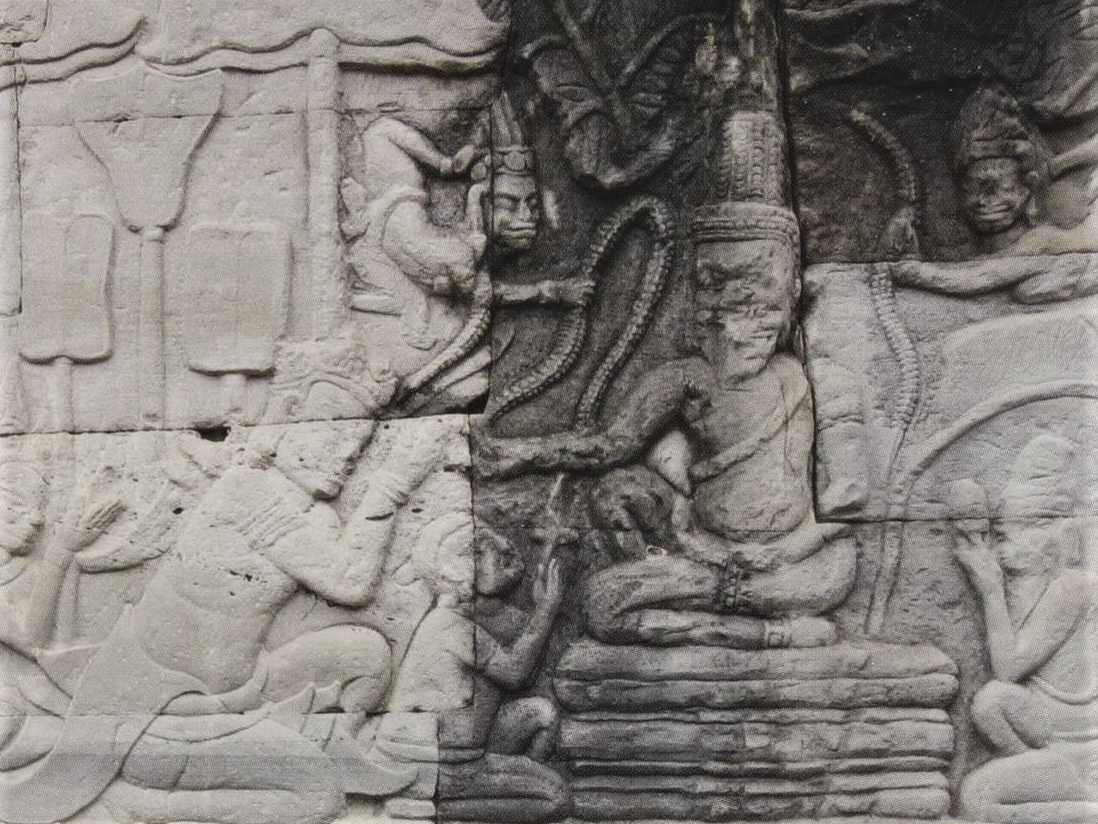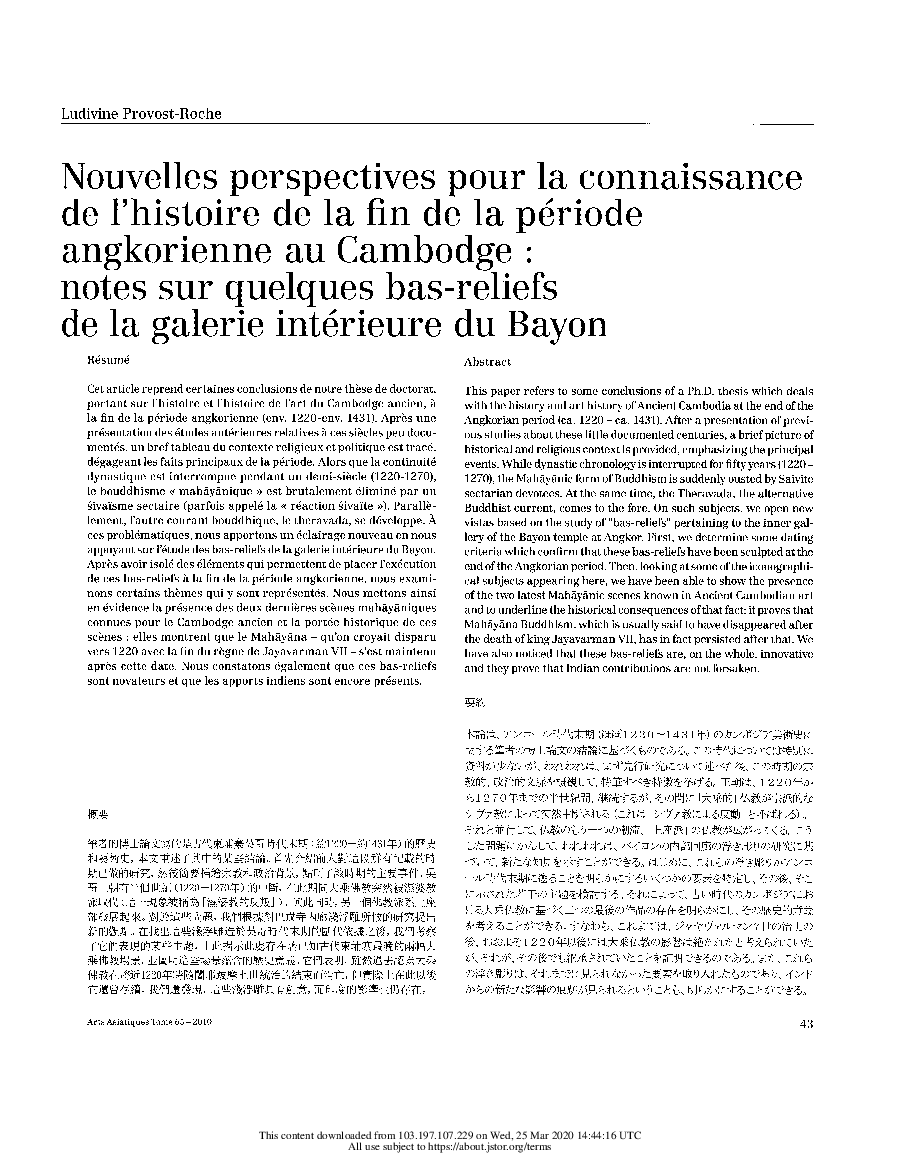Centered on the Bayon bas-reliefs dating from the ‘post-Bayon’ area, this study shows the rise of a Khmer Theravada Buddhism in sculptural representations, and also reflects the transformation of the ‘prasat’, typical Brahmanic temple, into the ‘prang’ form, more adapted to Theravada worshipping.
The royal chronology of the period from the end of Jayavarman VII’s reign (1220?) to the supposed ‘fall’ of Angkor in the 15th century remains unclear. From scriptural sources, it has been established that the dynastic succession roughly happened in this order: Jayavarman VIII (from 1270 or 71), Šrīndravarman (1295−1307), Šrindrajayavarman (1307−1327) and finally Jayavarmaparamešvara (1327- ?). It is supposed that Indravarman II ruled Angkor between Jayavarman VII and Jayavarman VIII.
The development of Khmer Theravada Buddhism was far from linear. Bas-reliefs of the “post-Bayon” period reflect the revival of Hindu themes, the dedication of new temple structures to Vishnu…Jayavarman VIII is known to have encouraged this “re-Indianization”, to the point that he had the massive Buddha statue (3.6 m high) removed from the Bayon main sanctuary and smashed into pieces. The remains of the statue were recovered from a well in 1933 only, and reassembled.
On the cultural, artistic and religious levels, more sources are available to research. From them, the author expands her main thesis: “Tandis que la fin de la période angkorienne est parfois décrite comme une période de déclin, notamment de l’indianité, au profit de la mise en place d’un ensemble culturel centré sur le theravāda fortement khmérisé, on a plutôt l’impression d’une juxtaposition de plusieurs composantes, donnant à cette période des allures de « transition » plus que de déclin.” Transition, more than decline, would be the best term to describe this period.
Full title: Nouvelles perspectives pour la connaissance de l’histoire de la fin de la période angkorienne: notes sur quelques bas-reliefs de la galerie intérieure du Bayon.
Main photo: A sovereign paying his respect to an ascetic, Bayon inner gallery, northeast face (Photo by the author).



